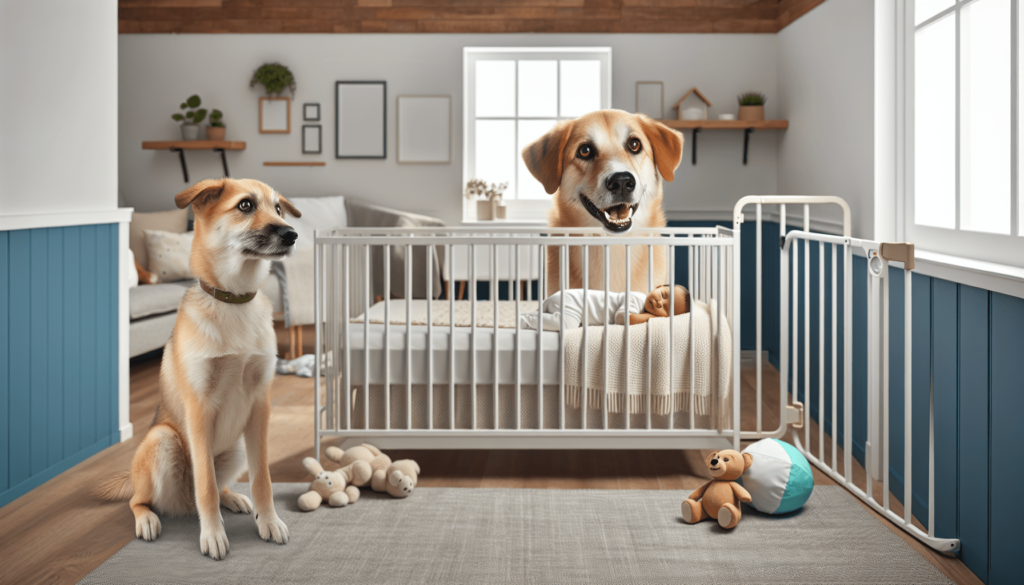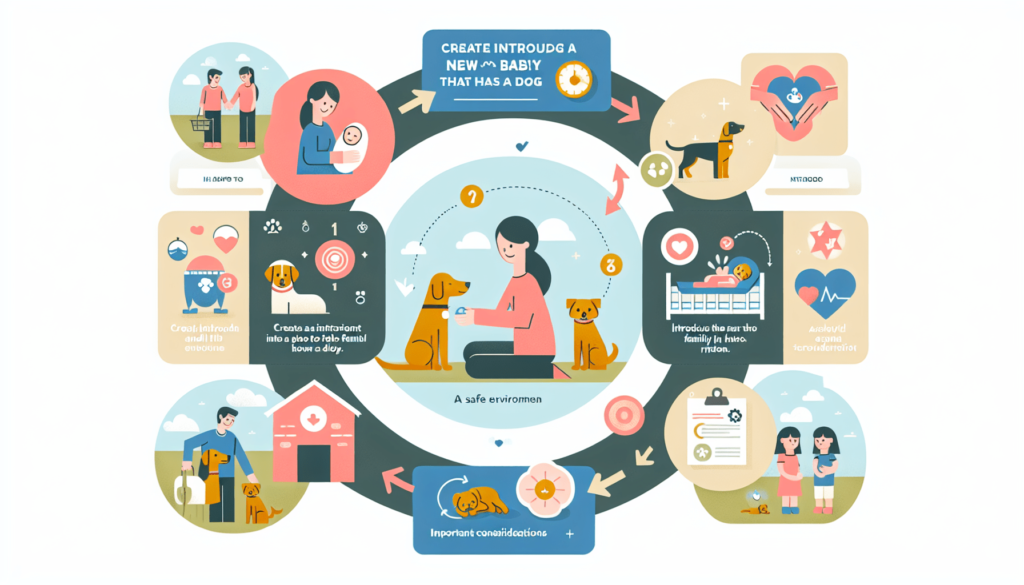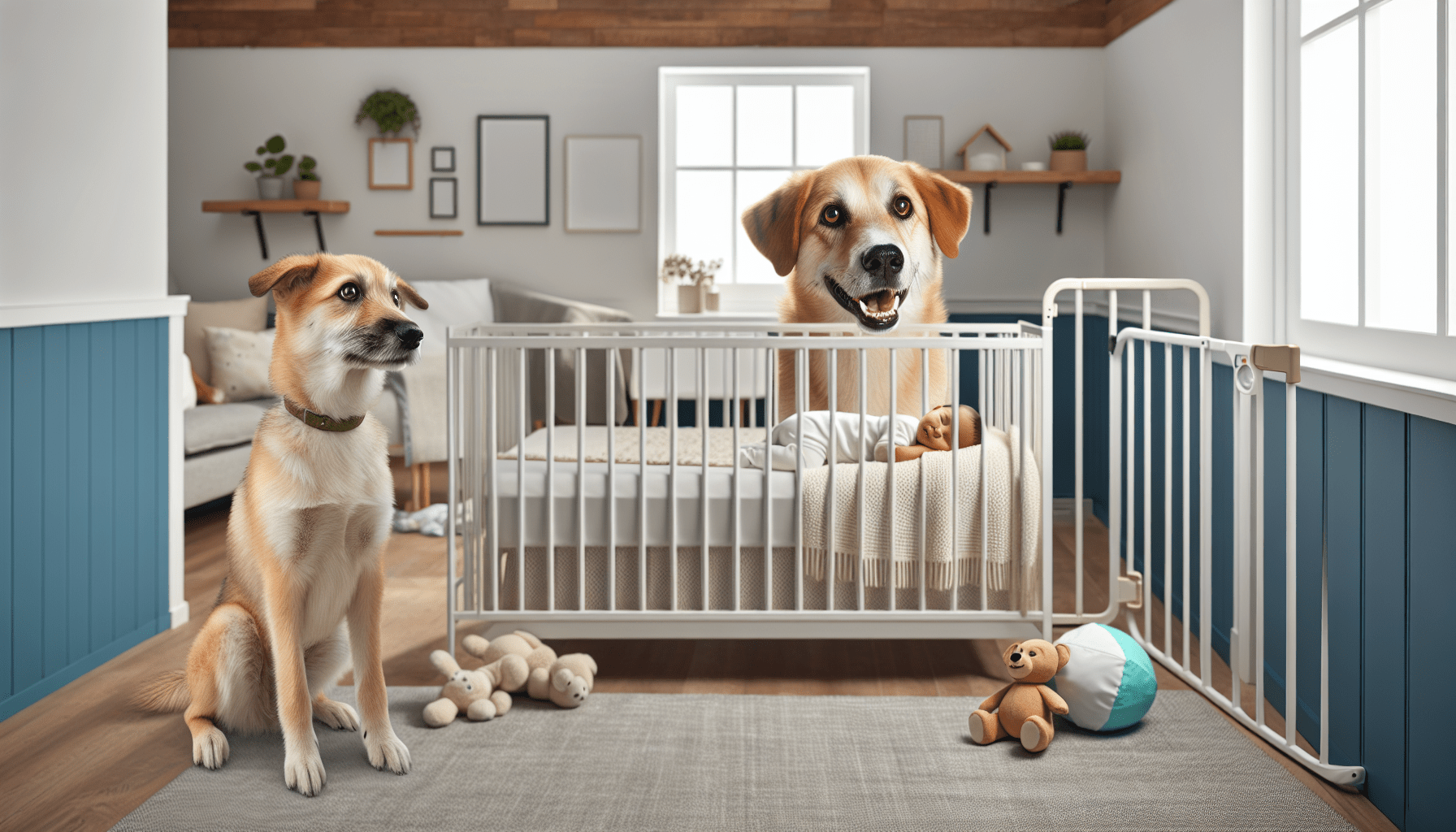So, you’re expecting a new addition to the family? Congratulations! As exciting as it is for you, it’s equally important to ensure that your furry friend is prepared for this significant change. Introducing a new sibling can be a big adjustment for your dog, but with a little preparation and some extra love, you can help pave the way for a smooth transition. In this article, we’ll discuss some practical tips on how to prepare your dog for their new sibling, ensuring a harmonious and happy household for all.
Introducing the Idea of a New Sibling
Explain the concept of a new baby
Congratulations! You’re expecting a new addition to your family, and it’s important to start preparing your furry friend for the arrival of your new baby. Dogs are highly perceptive and can often sense changes in their environment, so it’s crucial to include them in conversations about the baby from the beginning. This will help them understand what is happening and allow them to adjust more easily to the upcoming changes.
Include the dog in conversations about the baby
Make sure to include your dog in discussions about the baby. While they may not fully understand the concept, they can still pick up on the excitement and changes in your behavior and tone of voice. Talk to your dog about the baby, use positive and enthusiastic language, and let them feel involved in the process. By including your dog in these conversations, you are reinforcing their bond with you and helping them feel part of the new sibling’s arrival.
Maintain routines and provide reassurance
Dogs thrive on routines, and sudden changes can cause anxiety and stress. Amidst the anticipation of your new baby, try your best to maintain your dog’s regular routines as much as possible. Stick to their usual feeding, exercise, and playtime schedules. This consistency will provide them with the reassurance they need during this transitional period. Additionally, continue to give them plenty of love, attention, and positive reinforcement to remind them that they are still an important part of your family.
Ensuring Basic Obedience and Training
Review basic commands and obedience skills
Before the baby arrives, it’s essential to brush up on your dog’s basic commands and obedience skills. Refresh their memory on commands such as sit, stay, down, and leave it. Consistent practice with these commands will not only reinforce their understanding but also establish you as the pack leader and help your dog understand boundaries. This foundation of obedience will be particularly beneficial once the baby is here and you need to manage both your dog and infant simultaneously.
Work on any behavior issues
If your dog has any behavior issues, now is the time to address them. Seek the help of a professional dog trainer or behaviorist to tackle any aggressive tendencies, excessive barking, or anxiety-related problems. Ensuring your dog is well-behaved and balanced will create a safer and more comfortable environment for both the dog and the new baby.
Practice leash and walking manners
Walking your dog becomes even more important once the baby arrives. Practice good leash manners to ensure that your dog walks calmly and attentively by your side. This will make walks with the baby much easier and less stressful. Take the opportunity to introduce your dog to baby strollers or a carrier during walks, allowing them to become familiar with these new items they will encounter regularly.

Gradual Changes in Routine
Adjust the dog’s schedule gradually
As your due date approaches, it’s a good idea to gradually adapt your dog’s schedule to the anticipated changes that the baby will bring. Slowly shift their feeding, exercise, and sleep routines to align with the times you’ll need to attend to the baby’s needs. By doing this gradually, your dog will have a smoother transition and will be better prepared for the changes in their daily routine.
Establish new routines and boundaries
In addition to adapting their existing routine, establish new routines and boundaries specific to the baby’s needs. For example, decide on designated spaces where your dog will not be allowed when the baby is present, such as the nursery. Consistency is key in enforcing these new boundaries, which will help your dog understand their place in the family hierarchy and reduce potential conflicts or anxieties.
Make time for individual attention
While caring for a newborn can be demanding, don’t forget to set aside quality time to spend with your dog. They still need attention, love, and affection to thrive. Whether it’s a daily walk, playing fetch in the backyard, or snuggling together on the couch, these moments of one-on-one time will strengthen your bond and reassure your dog that they are still cherished members of the family.
Creating a Safe Space for the Dog
Designate a dog-friendly area
Preparing a designated space for your dog is crucial to ensure their comfort and safety amidst the changes a new baby brings. Set aside a dog-friendly area in your home where your furry friend can retreat when they need a break from the hustle and bustle. This space can be a cozy corner with their bed, toys, and water and food bowls. Having a designated safe space helps them feel secure and provides them with an area where they can relax and recharge.
Provide comfort and familiar items
Make sure your dog’s designated area is equipped with their favorite comfort items, such as blankets or toys. These familiar objects will provide them with a sense of security and reassurance, especially during moments of stress or change. Having their own familiar items in their designated space will help your dog adjust to the new dynamics of the household.
Set up baby gates or barriers
To ensure the safety of both your dog and your baby, consider investing in baby gates or other barriers to separate certain spaces in your home. Install gates to restrict access to areas where the dog may not be allowed, such as the nursery or playroom. This helps establish clear boundaries and prevents any accidental interactions that could potentially lead to unwanted situations. Baby gates provide peace of mind and allow you to monitor and control your dog’s access to certain areas, keeping everyone safe and happy.

Positive Associations with Baby-Related Items
Allow the dog to sniff and investigate baby items
Before the baby arrives, allow your dog to explore and sniff baby-related items, such as blankets, clothes, or toys. This will help them become familiar with the scents associated with the baby and make it less overwhelming when the baby is finally home. Supervise these interactions to ensure your dog remains calm and gentle, rewarding them with praise or treats for positive behavior.
Use baby sounds or recordings to desensitize the dog
To prepare your dog for the sounds that a baby makes, consider playing recordings of baby sounds in their presence. Start with low volumes and gradually increase the exposure as your dog becomes more comfortable. This desensitization process will help your dog become accustomed to the various sounds babies produce, reducing the likelihood of fearful or anxious reactions when the baby starts babbling, crying, or giggling.
Reward calm and positive behavior around baby items
Whenever your dog displays calm and positive behavior around baby items, be sure to reward them. Positive reinforcement, such as treats, praise, or gentle petting, will associate the presence of baby-related items with positive experiences for your dog. By rewarding calm behavior, you are reinforcing the idea that being near these items is a desirable and enjoyable experience, further fostering a positive association.
Introducing Smells and Sounds of a Baby
Bring home a blanket or clothing with the baby’s scent
To help your dog become familiar with your new baby’s scent, bring home a blanket or a piece of clothing that carries the baby’s smell before the actual introduction. Allow your dog to sniff and investigate the item, making sure to supervise these interactions. Associating the scent with positive experiences, such as treats or gentle affection, will help your dog build a positive association with the baby’s smell.
Play recordings of baby sounds
In addition to getting your dog accustomed to the scent of the baby, it’s equally important to introduce them to the sounds babies make. Play recordings of baby sounds, such as crying or cooing, in the presence of your dog. Start with low volumes and gradually increase the volume over time. This exposure will help your dog adjust to the noises they will soon be hearing regularly, reducing their potential anxiety or stress.
Gradually increase exposure to baby-related scents and sounds
As the arrival of your baby approaches, continue gradually exposing your dog to various baby-related scents and sounds. This gradual approach allows your dog to acclimate at their own pace. Keep the interactions positive and rewarding, reinforcing the idea that these new things are part of their environment and nothing to be fearful of or concerned about. Consistency and patience are key during this process.
Supervised Interactions and Socialization
Gradually introduce the dog to the baby
Once the baby arrives, it’s crucial to introduce your dog to the baby in a controlled and supervised environment. Start by allowing your dog to sniff the baby from a safe distance, rewarding calm and gentle behavior. Over time, with positive experiences and close supervision, you can gradually introduce closer interactions between your dog and the baby. Always prioritize the safety of both your dog and your baby during these interactions.
Supervise all interactions closely
As your dog and baby spend more time together, it’s important to remain vigilant and supervise all interactions closely. Never leave your dog and baby unsupervised, even if your dog is generally well-behaved. Supervision ensures that any potentially risky behaviors or misunderstandings can be addressed promptly. This watchful eye allows you to intervene if necessary and reinforces positive behavior, creating a safe and harmonious environment for all.
Reward calm and gentle behavior
Throughout the process of introducing your dog to the baby, reward and praise your dog for calm and gentle behavior. This positive reinforcement will help your dog associate being around the baby with positive experiences. Whether it’s sitting quietly while the baby is in the room or showing gentle curiosity towards the baby, acknowledging and rewarding these behaviors will strengthen the bond between your dog and the new family member.
Preparing for the Arrival Day
Establish a plan for the dog on arrival day
The day your baby arrives can be overwhelming, so it’s essential to have a plan in place for your dog. Designate a family member or friend to take care of your dog during labor and the first few days after delivery. This ensures that your dog is well-attended to, receives their usual care, and avoids any potential stress or anxiety related to the hospital or new routines at home.
Arrange for someone to take care of the dog temporarily
While you are recovering and adjusting to the new baby, arranging for temporary care for your dog can be extremely helpful. This allows you to focus solely on your recovery and attending to the baby’s needs without worrying about your dog’s care. Whether it’s a trusted friend, family member, or professional pet sitter, having someone provide care and attention to your dog during this transitional period will make the transition smoother for everyone involved.
Create a calm environment for the dog
During the arrival day and subsequent days, it’s important to create a calm and quiet environment for your dog. Limit visitors and loud noises, and establish quiet spaces where your dog can retreat if they feel overwhelmed. This calm environment will help your dog feel secure and reduce their anxiety during this period of adjustment.
Building a Positive Relationship
Encourage gentle and positive interactions
As your baby grows, encourage gentle and positive interactions between your dog and the child. Teach your child how to engage with the dog appropriately, using gentle touches and respecting the dog’s boundaries. Supervise these interactions closely to ensure the safety of both child and dog, rewarding both for their positive behavior and gentle interactions.
Involve the dog in baby-related activities
Incorporating your dog into baby-related activities can help strengthen their bond and make them feel included. For example, allow your dog to sit nearby during baby bath time or feeding sessions. This involvement reinforces the positive association between your dog, the baby, and these activities. It’s important, though, to never force your dog to participate if they are not comfortable. Always respect your dog’s boundaries and cues.
Provide equal attention and affection to the dog
While caring for a new baby is undoubtedly time-consuming, it’s essential to continue providing your dog with equal attention and affection. Ensure that they are not feeling neglected or excluded from family activities. Set aside dedicated time each day to engage in activities that your dog enjoys, such as playtime, training sessions, or walks. This continued attention and affection will strengthen the bond between you and your dog, ensuring a positive relationship despite the arrival of the new baby.
Seeking Professional Help if Needed
Consulting a professional dog trainer or behaviorist
If you encounter any specific challenges or concerns during the process of preparing your dog for the new sibling, don’t hesitate to seek the help of a professional dog trainer or behaviorist. They have the expertise and experience to address any unique issues that may arise and can provide you with guidance and strategies tailored to your dog’s individual needs. Their professional support will ensure a smoother transition and will make the adjustment period easier for both your dog and your family.
Addressing any signs of anxiety or aggression
If you notice signs of anxiety or aggression in your dog during the preparation or introduction process, it’s crucial to address these issues promptly. Consult with a professional to help you identify the possible causes of these behaviors and guide you in resolving them. Ignoring or dismissing these signs can lead to potentially dangerous situations, so it’s best to nip them in the bud with the help of a qualified expert.
Getting guidance on specific dog-child interactions
As your baby grows and becomes more mobile, it’s important to seek guidance on specific interactions between your dog and child. Professional advice can help you navigate activities such as crawling, walking, and playing, ensuring that both your dog and your child remain safe and happy. Consultation with a professional will provide you with the right strategies to promote a healthy and positive relationship between your dog and new sibling for years to come.
Preparing your dog for a new sibling is an important and ongoing process. With patience, consistency, and plenty of positive reinforcement, you can help your pup adjust to the changes and welcome the new baby into your family with open paws. Remember, your dog’s well-being and happiness are paramount, and by following these steps, you can ensure a harmonious and loving environment for everyone in your growing family.

